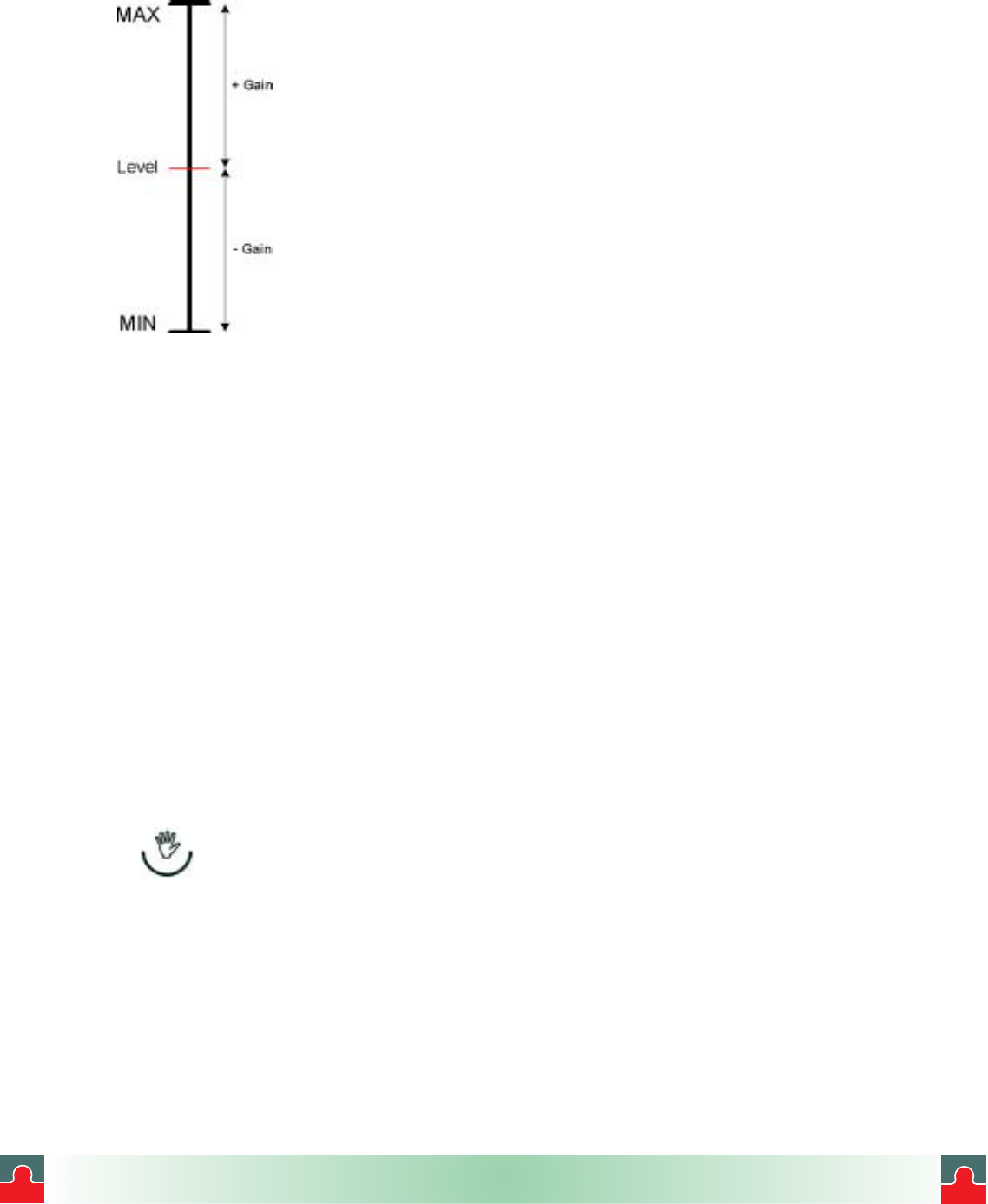
Graphically, it would look like this:
The imager automatically calculates Level and Gain when switched
from Automatic to Manual or Semi Automatic modes, thus
providing a smooth and meaningful transition of the thermal
boundaries of the scene.
Once initially set by the ThermoView imager, Gain and Level can
then be adjusted by the user in order to accommodate their specific
requirements.
Of course, in practical terms you can’t actually see the values for
Gain and Level. You will adjust Gain and Level, but you will see
the changes on the MIN and MAX temperature values at each end
of the thermal scale. Since we know how Level and Gain are
calculated by the imager, it is easy to understand how variations in
Gain and Level change the MIN and MAX limit values by solving
the Gain and Level equations for MIN and MAX as follows:
GainLevelMax
GainLevelMin
In summary: you need to adjust Level to get close to temperature level you are interested in
and then adjust Gain to get you more or less resolution as needed around the desired level.
Tip:
Always begin by selecting the Automatic mode. Automatic mode will suffice for
most applications. The unit automatically adjusts the image to show the lowest
temperature value present in the thermal scene (MIN) and the highest temperature
value in the scene (MAX), at all times. This mode does not require any other
adjustment (other than properly focusing the unit). Once you are familiar with the
thermal scene you are looking at just press the Up button to activate the Quick
Image Fix feature, described on the previous pages. When you press the Up
button the imager fixes the MIN and MAX temperature values, thus allowing a
more stable thermal image for the viewer. The next step is to capture the image for
downloading later. To freeze the image, simply pull the trigger once and then press
the Up button to actually save the image.
In Semi-Automatic mode the ThermoView imager keeps calculating the Level
automatically. This mode is recommended when the user is interested in controlling the
resolution around a varying temperature level, thus saving the user a lot of trouble and time
trying to constantly adjust Level.
July 1, 2003 - 44 - Version 1.0
i
i
Tel: (01943) 602001- WWW.ISSLTD.CO.UK - Fax: (01943) 816796


















